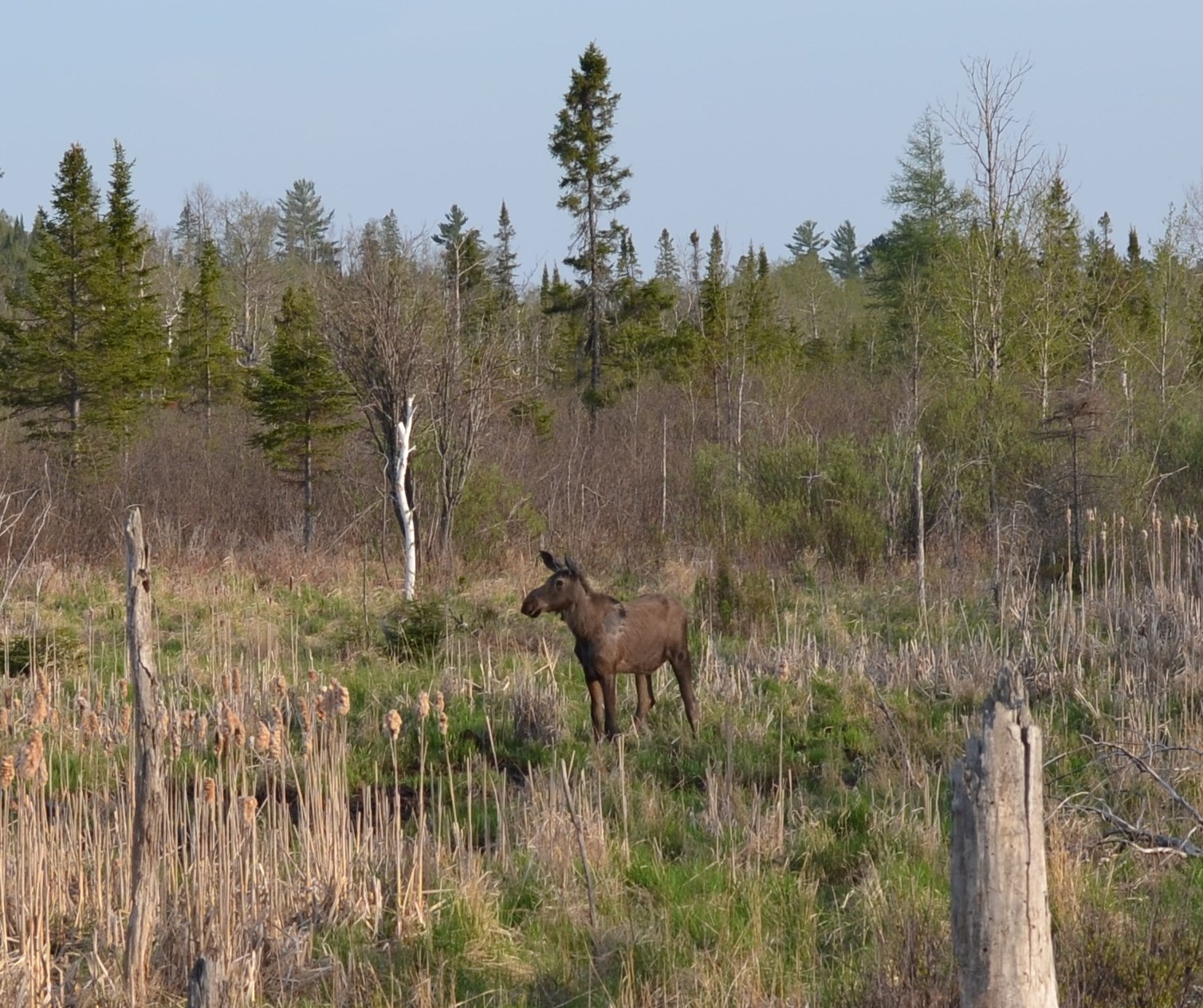|
June 2, 2016
DNR ready to help evaluate status of moose in Michigan
U.S. Fish and Wildlife Service announces initial finding that federal protections may be warranted
Contact: Daniel Kennedy, 517-284-6194
The Michigan Department of Natural Resources will aid the U.S. Fish and Wildlife Service in the federal agency’s evaluation of whether the northwestern subspecies of moose – found in four states including Michigan – should be added to the list of threatened and endangered species affording federal protection.
“We will work closely with the Fish and Wildlife Service and the states of Wisconsin, Minnesota and North Dakota to
further this important evaluation,” said DNR Wildlife Division Chief Russ Mason. “Moose are one of Michigan’s iconic wildlife species.”
In an announcement today, the Fish and Wildlife Service found a petition filed by The Center for Biological Diversity and Honor the Earth “provided substantial scientific or commercial information” that listing under the Endangered Species Act may be warranted. and Honor the Earth “provided substantial scientific or commercial information” that listing under the Endangered Species Act may be warranted.
“This substantial 90-day finding initiates a rigorous status review in which the Service will determine whether the species warrants listing under the Endangered Species Act,” the Service said in a news release.
To ensure the process is comprehensive and the final determination is based on the best available scientific and commercial data, the Service has opened a 60-day comment period to solicit relevant information from the public.
The northwestern moose subspecies (Alces alces andersoni) being evaluated is found in the Upper Peninsula, including Isle Royale, northeastern and northwestern Minnesota, northeastern North Dakota, as well as a small, recently established population in Wisconsin.
During the subspecies status review – commonly referred to as a “12-month finding” –the Service will take a closer look at the moose subspecies population, including threats.
At this point, the Service will solicit additional scientific and commercial information from all sources to inform their decision.
Ninety-day findings are published in the Federal Register and represent the Service’s first step in assessing the measures proposed in the petition.
“In Michigan, the moose population has declined for a variety of reasons, including habitat loss, predation and climate change,” Mason said. “Moose thrive in cold conditions due to their thick insulating fur, long legs and wide feet. Warmer temperatures put moose at risk of overheating, which causes malnutrition and immune system concerns.”
Moose are native to Michigan and occurred throughout all except the southwestern Lower Peninsula prior to European settlement. With habitat loss, hunting and brainworm, moose disappeared from the Lower Peninsula in the 1890s, and only a few scattered individuals remained in the Upper Peninsula.
After a failed reintroduction attempt during the 1930s, citizens occasionally observed moose in the U.P. during the 1950s and 1960s.
In the mid-1980s, the DNR translocated 59 moose from Algonquin Provincial Park in Ontario, Canada and released them in Marquette County near Michigamme. These relocated moose increased their numbers, given improved habitat conditions with fewer white-tailed deer and poaching widely discontinued.
DNR population surveys in recent years have estimated the moose population at roughly 400 in the western U.P. and, based on citizen reports and field observations, about 100 in the eastern part of the region.
Moose are currently listed as “species of special concern” in Michigan, but this status does not afford any protections to the animals or their habitat.
Moose are also a designated game animal in Michigan. In 2011, a seven-member Moose Hunting Advisory Council, appointed by the governor, studied impacts moose hunting would have on the moose population and the various economic benefits associated with moose hunting.
After producing its findings, the Michigan Natural Resources Commission determined that current conditions of the state’s moose population did not support authorizing a hunt.
For more information on the Endangered Species Act listing process, including 90-day findings and status reviews, visit: www.fws.gov/endangered/esa-library/pdf/listing.pdf.
To learn more about moose in Michigan, visit the DNR’s webpage.
/Note to editors: An accompanying photo is available below for download and media use. A suggested caption follows. Credit: Michigan Department of Natural Resources.
Moose: A moose walks in a wetland area along U.S. 41 near Humboldt in Marquette County in May. The U.S. Fish and Wildlife Service is evaluating whether the northwestern subspecies of moose found in Michigan and three other states warrants federal protections under the Endangered Species Act./
The Michigan Department of Natural Resources is committed to the conservation, protection, management, use and enjoyment of the state’s natural and cultural resources for current and future generations. For more information, go to www.michigan.gov/dnr.
|